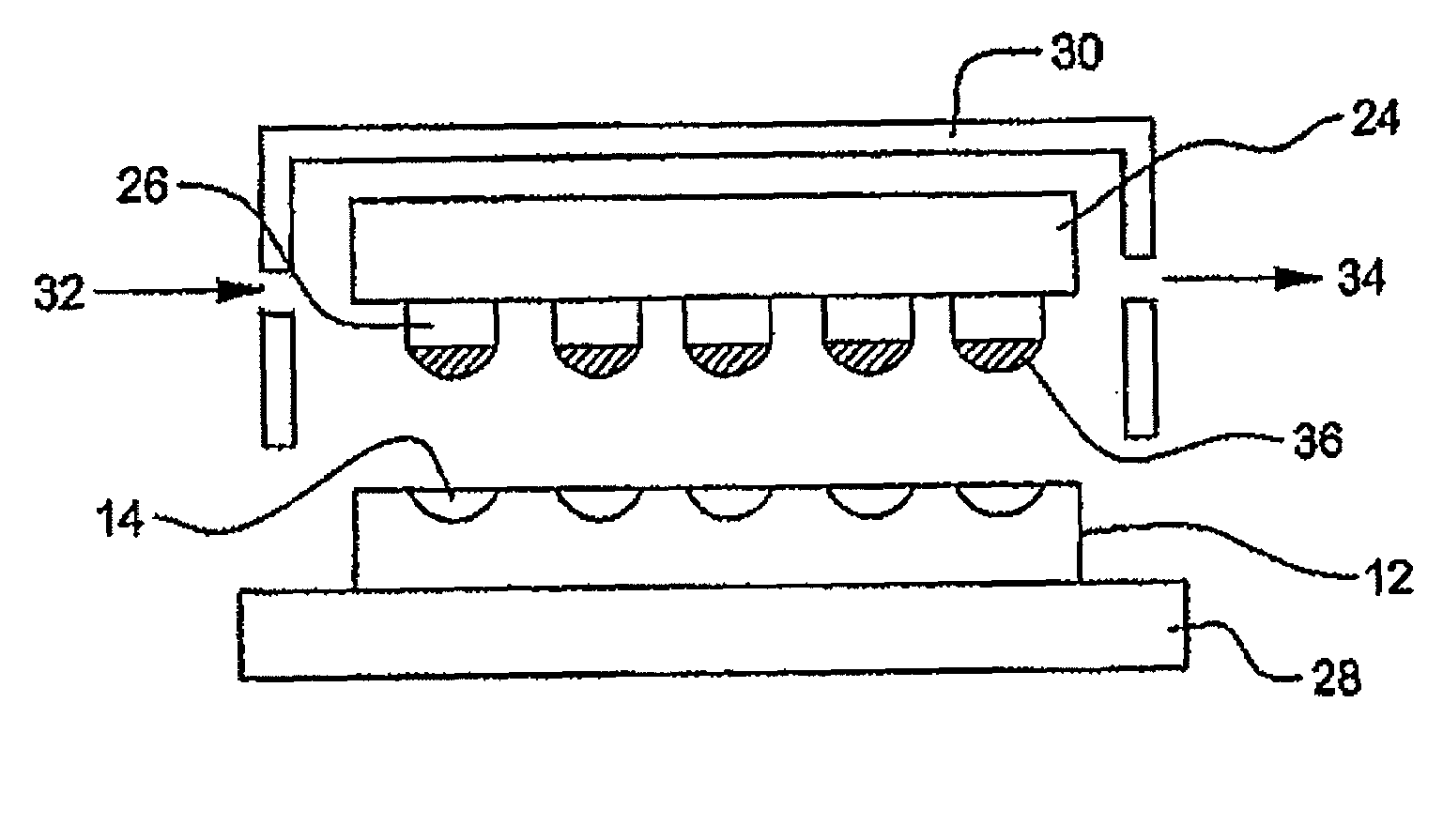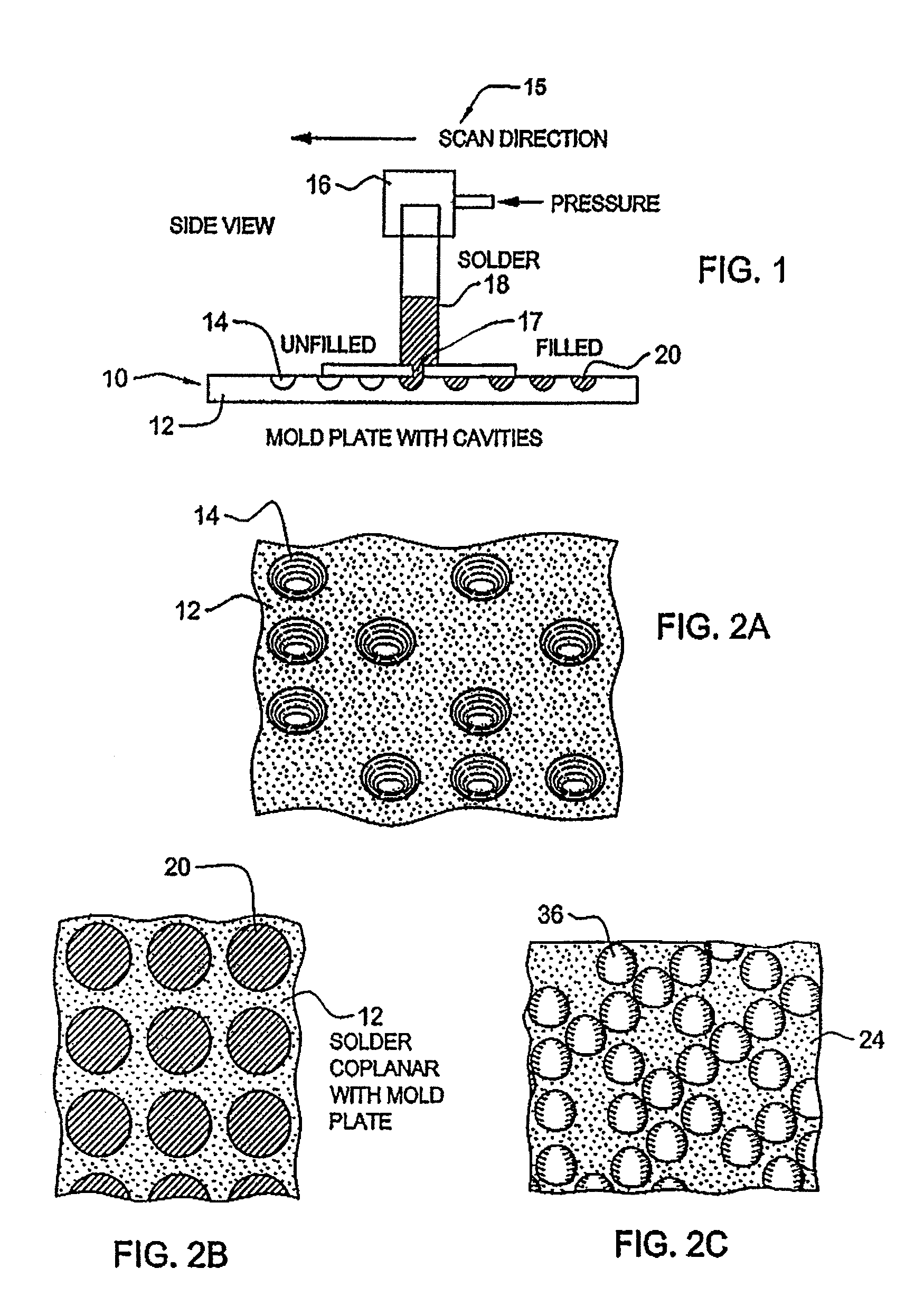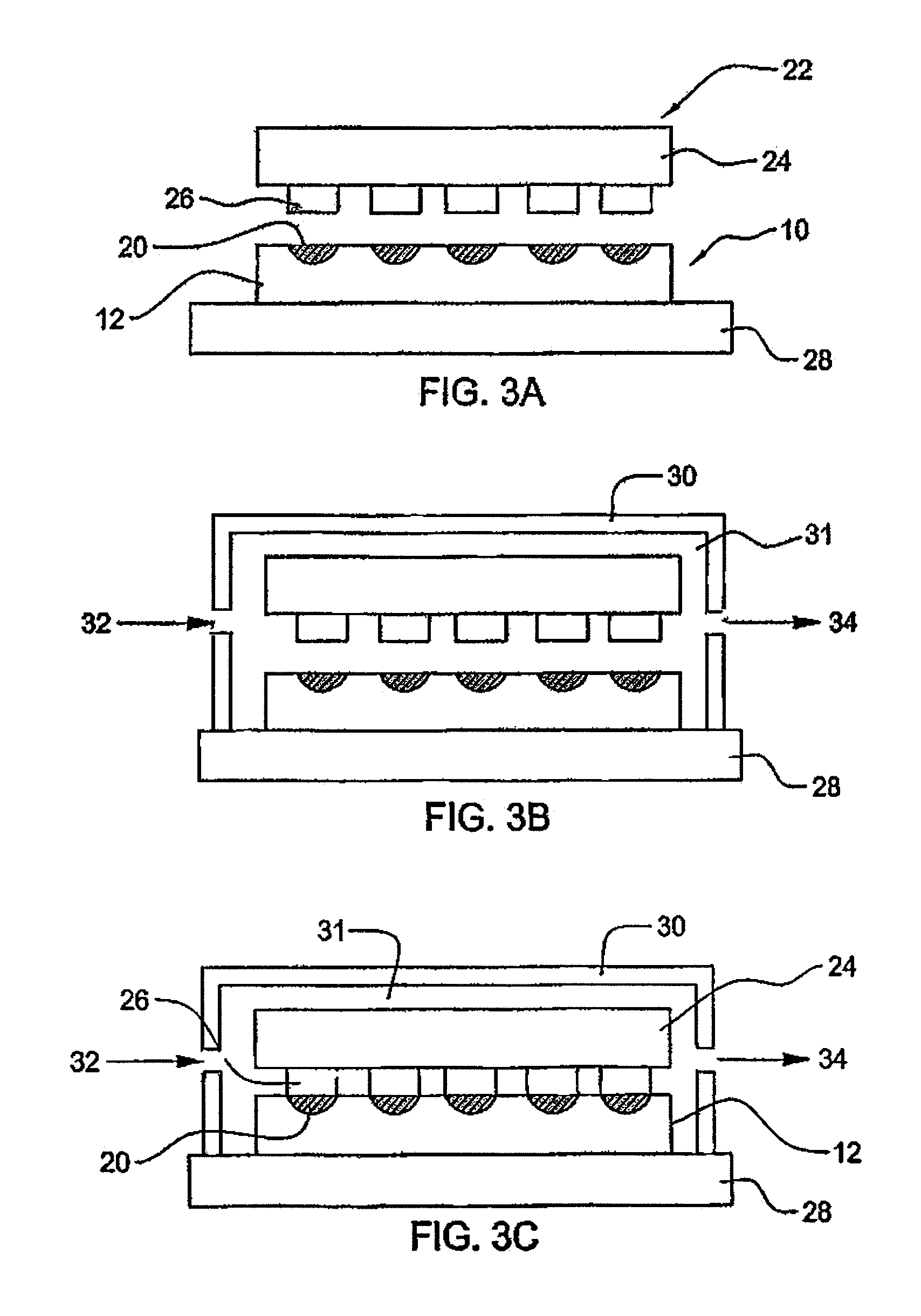High tin solder etching solution
a technology of high tin solder and etching solution, which is applied in the direction of electrical equipment, metal-working equipment, solid-state devices, etc., can solve the problems of non-uniformity of etching rate across the entire surface, severe limitations in the bath life of concentrated hcl solution, and industry problems
- Summary
- Abstract
- Description
- Claims
- Application Information
AI Technical Summary
Benefits of technology
Problems solved by technology
Method used
Image
Examples
Embodiment Construction
)
[0038]In describing the preferred embodiment of the present invention, reference will be made herein to FIGS. 1-3D of the drawings in which like numerals refer to like features of the invention.
[0039]Solder transfer molds using various solders containing tin may be readily processed using the method of the invention and the solders include lead-free binary, ternary and quaternary alloys. Lead-free alloys are of particular commercial significance and for convenience, the following description will be directed to such lead-free alloys, although it will be appreciated by those skilled in the art that any suitable solder may be readily processed using the method of the invention. Exemplary lead-free alloys include Sn-3.8% Ag-0.7% Cu, Sn-1.8% Ag, Sn-0.5% Ag and Sn-0.7% Cu. Also, in particular, the following description will be directed to tin containing lead-free alloys since these are likewise of significant commercial interest and an efficient method of providing solder interconnects ...
PUM
| Property | Measurement | Unit |
|---|---|---|
| Molar density | aaaaa | aaaaa |
| Molar density | aaaaa | aaaaa |
| Molar density | aaaaa | aaaaa |
Abstract
Description
Claims
Application Information
 Login to View More
Login to View More - R&D
- Intellectual Property
- Life Sciences
- Materials
- Tech Scout
- Unparalleled Data Quality
- Higher Quality Content
- 60% Fewer Hallucinations
Browse by: Latest US Patents, China's latest patents, Technical Efficacy Thesaurus, Application Domain, Technology Topic, Popular Technical Reports.
© 2025 PatSnap. All rights reserved.Legal|Privacy policy|Modern Slavery Act Transparency Statement|Sitemap|About US| Contact US: help@patsnap.com



